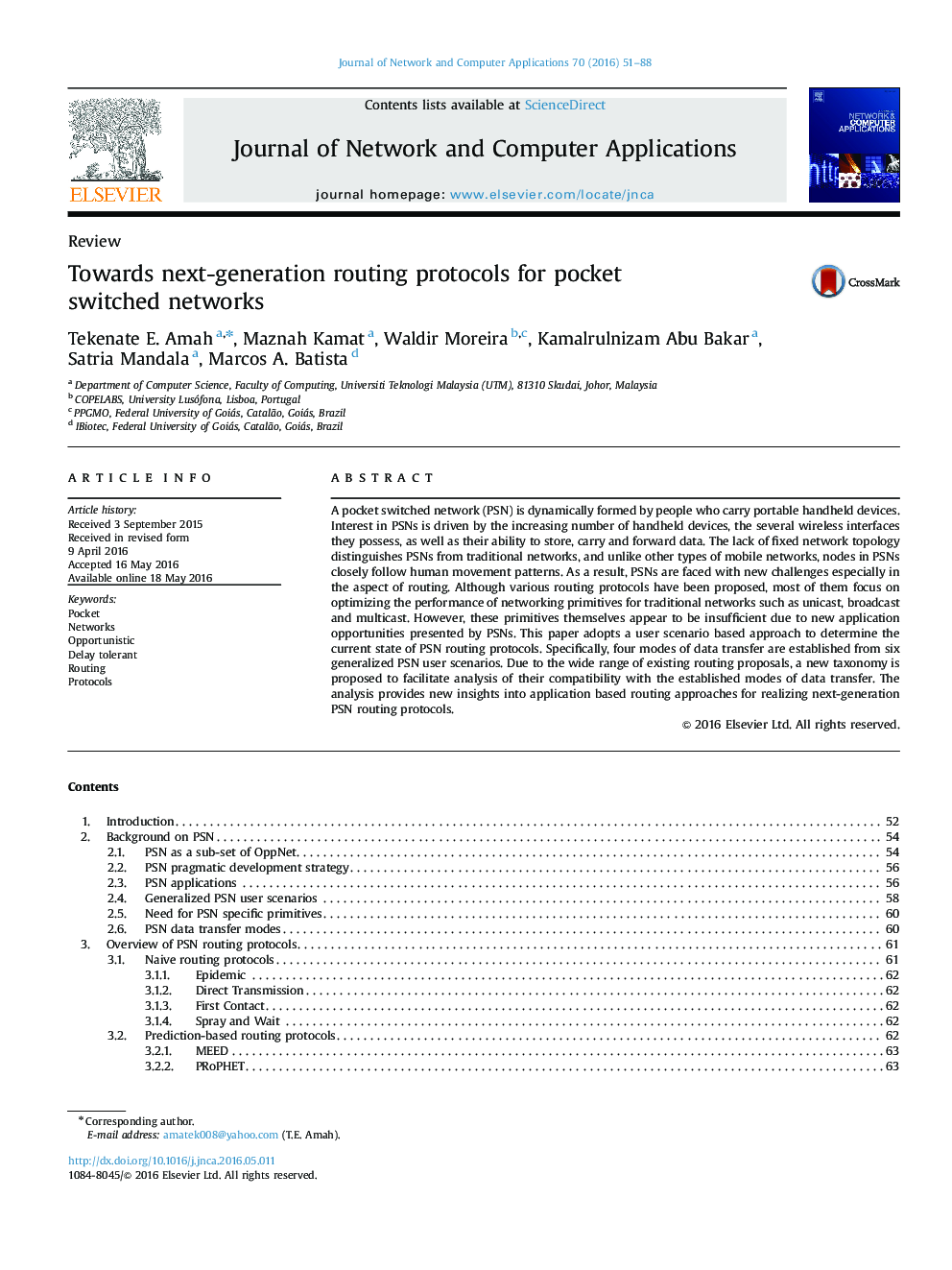| Article ID | Journal | Published Year | Pages | File Type |
|---|---|---|---|---|
| 459166 | Journal of Network and Computer Applications | 2016 | 38 Pages |
•A detailed characterization of PSN user scenarios and respective data transfer modes.•An exhaustive analysis of existing PSN routing solutions.•A novel classification for PSN routing complementing gaps of existing taxonomies.•A scenario-driven set of design guidelines for next-generation PSN routing solutions.•An instructive list of future directions towards real-world PSN implementations.
A pocket switched network (PSN) is dynamically formed by people who carry portable handheld devices. Interest in PSNs is driven by the increasing number of handheld devices, the several wireless interfaces they possess, as well as their ability to store, carry and forward data. The lack of fixed network topology distinguishes PSNs from traditional networks, and unlike other types of mobile networks, nodes in PSNs closely follow human movement patterns. As a result, PSNs are faced with new challenges especially in the aspect of routing. Although various routing protocols have been proposed, most of them focus on optimizing the performance of networking primitives for traditional networks such as unicast, broadcast and multicast. However, these primitives themselves appear to be insufficient due to new application opportunities presented by PSNs. This paper adopts a user scenario based approach to determine the current state of PSN routing protocols. Specifically, four modes of data transfer are established from six generalized PSN user scenarios. Due to the wide range of existing routing proposals, a new taxonomy is proposed to facilitate analysis of their compatibility with the established modes of data transfer. The analysis provides new insights into application based routing approaches for realizing next-generation PSN routing protocols.
